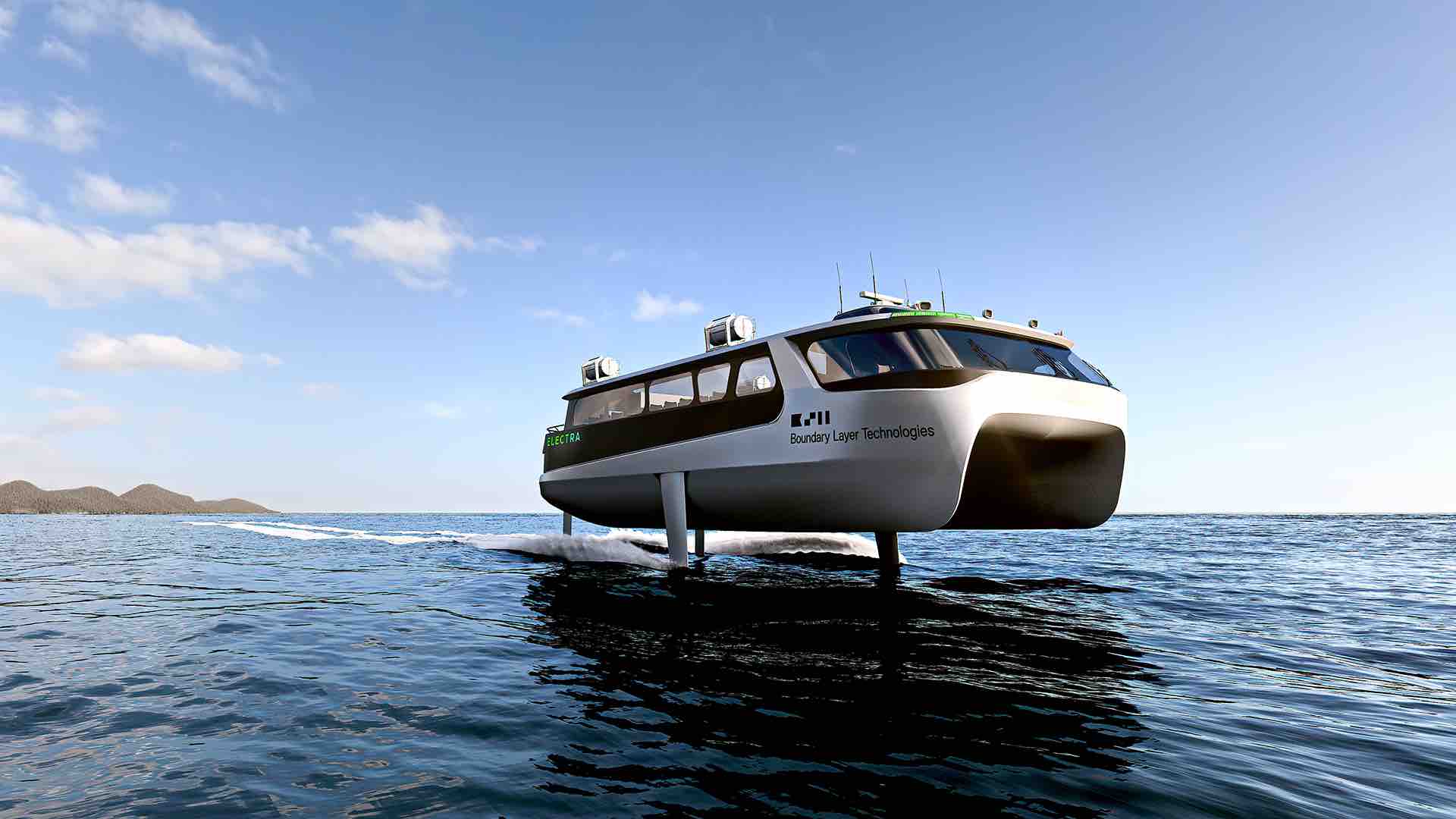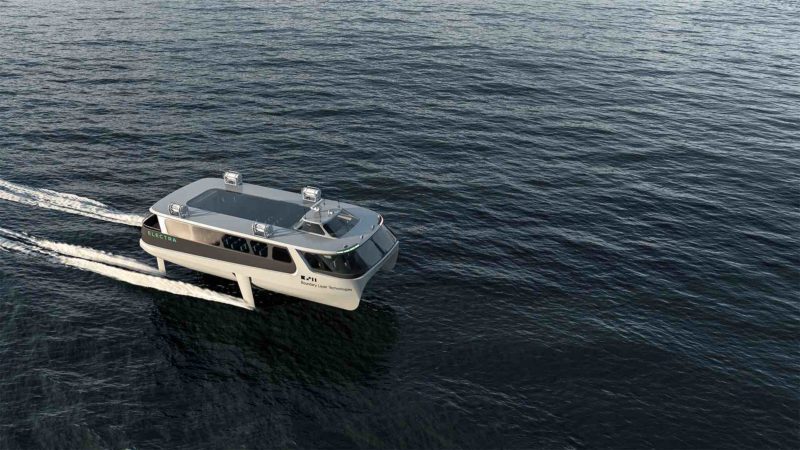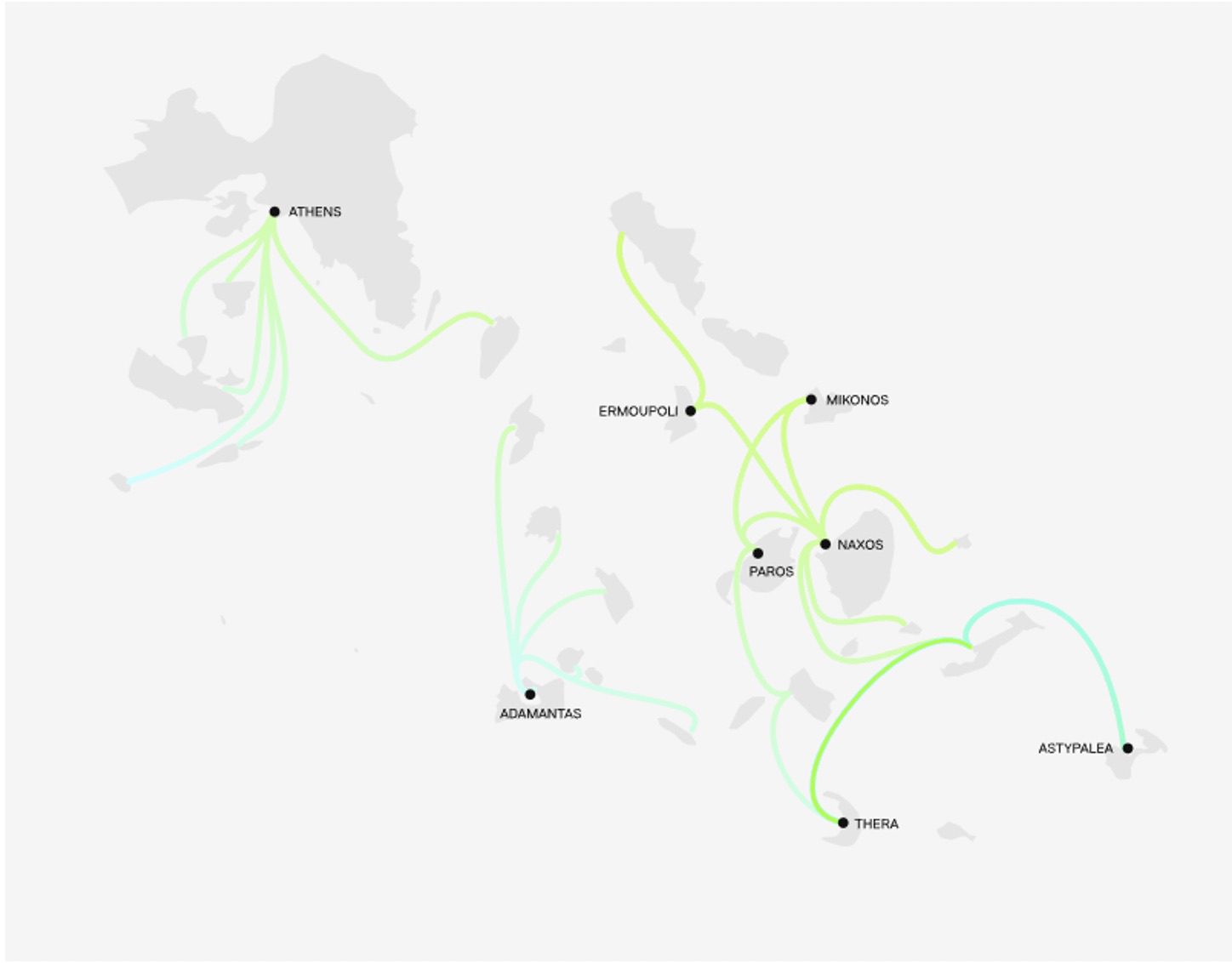California-based marine technology start-up Boundary Layer Technologies has unveiled its new fully electric hydrofoiling ferry concept, Electra, which boasts twice the speed and range of existing electric ferries with a range of up to 100 nautical miles and a cruising speed of 40 knots.
The Electra was unveiled by Boundary Layer Technologies last week, which claims the new concept ferry not only offers twice the speed and range of existing electric ferries but also offers reductions in operating expenses (Opex) of up to 35% compared to fossil fuel-burning fast ferry alternatives.
Of course, an electric ferry also helps ferry operators de-risk future cost uncertainties caused by carbon taxes and emissions trading schemes that are becoming more and more commonplace globally.
With a range of 100 nautical miles, or around 185-kilometres, and a cruising speed of 40 knots (around 75km/hr) thanks to the proprietary hydrofoil technology and podded propulsion system, the Electra’s battery-electric propulsion system also significantly reduces cabin noise by up to 20 decibels compared to conventional ferries. The ferry’s foiling system also offers excellent seakeeping and ride comfort.
“Hydrofoil technology is the key to enabling electrification of passenger ferries” said Ed Kearney, CEO of Boundary Layer Technologies.
“By reducing the drag of the vessel by a factor of two, the powering requirements are also halved, which increases the speed and range of what an electric ferry can do. This opens the door to electrification of the majority of ferry routes across the world.”
Able to carry 150 passengers and powered with 9,000kWh battery capacity, the core of Electra’s high efficiency is its proprietary hydrofoil design which reduces drag on the vessel by half which increases range, ride quality, and creates zero wake.
Headquartered in Alameda, California, Boundary Layer Technology claims that Electra is able to cover far-reaching routes and could service 48% of the ferry routes around Greece and its islands.
The Electra boasts a 2,400kW charging system that allows the ferry to charge in less than 3 hours, which measures out to around 1.3 minutes of charging for every one nautical mile. During operating hours, though, the Electra would be able to do short charges during passenger loading and unloading, while a longer charge is undertaken overnight.
Boundary Layer Technologies currently expects to put the first Electra into operation by the first quarter of 2024 in regions such as the United States, Scandinavia, and the Mediterranean.
“We think Electra is an exciting development of ferry technology and shows promise for decarbonizing ferry operations and adding to the customer’s experience” said Patrick Murphy, President, Blue & Gold Fleet, who is the contract operator of San Francisco’s 15 high-speed ferries.

Joshua S. Hill is a Melbourne-based journalist who has been writing about climate change, clean technology, and electric vehicles for over 15 years. He has been reporting on electric vehicles and clean technologies for Renew Economy and The Driven since 2012. His preferred mode of transport is his feet.


